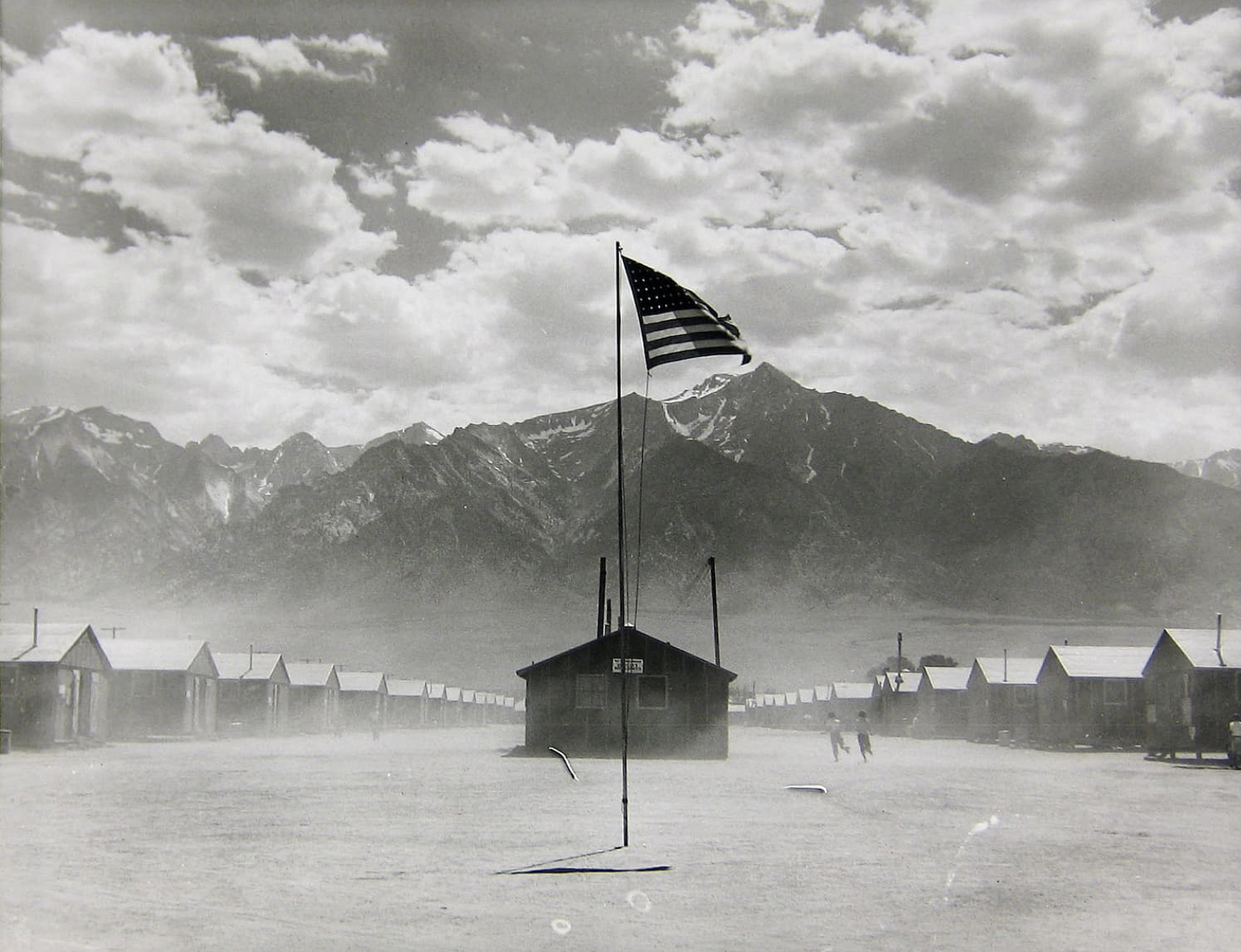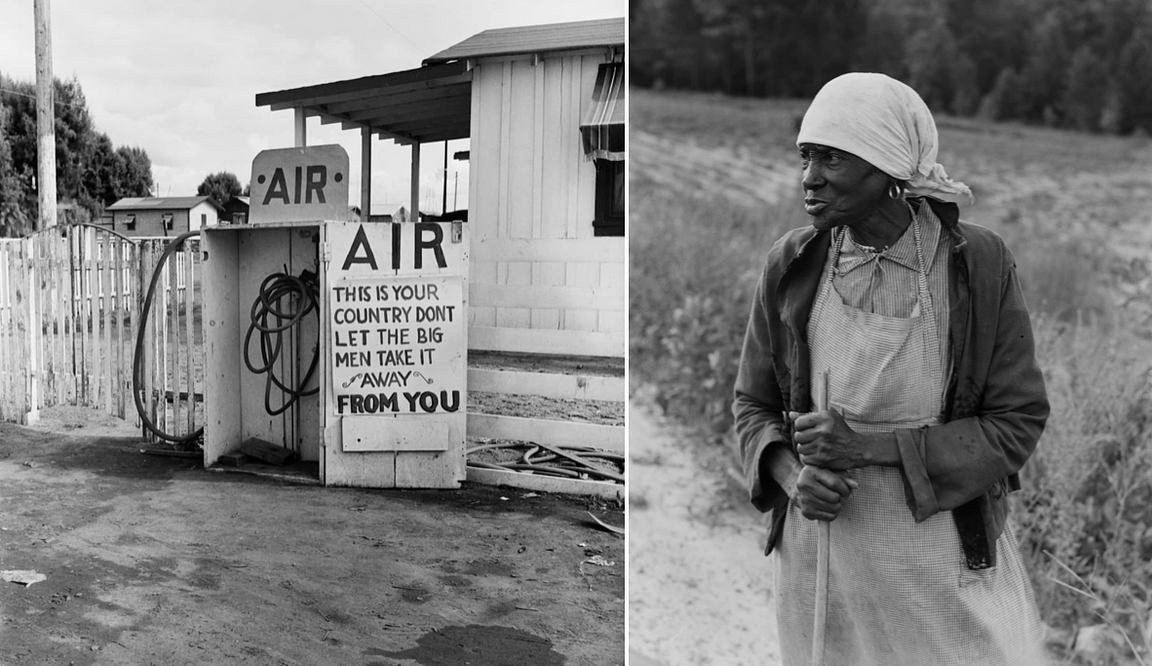What first draws the eye, even from across the room, is a close-up: the dark hood, the sinewy face, the upward gaze of worry or hope. She is equally plausible as grim reaper or nun, but as the title informs us, pointedly generalizing both person and place, she is “Migratory Worker, Rural California.”
That image (above) is among many now on display in an exhibition at the Oakland Museum of California.
As the longstanding official home of the world’s most complete Lange collection (more than 40,000 negatives, for starters), the museum has in recent years put forth several incisively curated displays of her work. Alongside the teeming, rabbit-hole-ready digital archive of Lange photos it launched in 2020, the museum regularly makes choice sub-collections viewable in person, like the recent one succinctly labeled “Photography as Activism.”
Lange is such a 20th-century American essential whom the image culture of the 21st century seems almost to take her for granted. As historical relics, her photographs might too easily be overlooked —at least until we really look.
With their unwavering, tactfully personalized attention to human hardships, these are pictures against indifference, and all the more urgent for it. They challenge the habits with which we so often look at photographic imagery now, in our perpetual scrolls through slideshows of vanities, striving absently to become plasticized billboards for shadowy corporations, enabling each other’s addictions to a hollowed-out sort of attention.
“Beauty was secondary” asserts an introductory placard just near the famed “White Angel Bread Line,” from 1932, as if to caution us against luxuriating in an image of such solemnity and historical significance, compositionally exquisite though it may be. Galvanized by the Great Depression, this was Lange’s spectacularly successful first foray into documentary work: an experiment to see what would happen when the comfortably established portraitist of San Francisco’s elite turned her kind eye instead to society’s suffering lower depths, and a decisive moment not just photographically but also culturally. That we don’t quite meet the gaze of that one front-facing man, standing tattered and hunched over his empty tin cup, feels less like evasion than an open invitation, the gesture with which we elect him to forever represent the dignity of the downtrodden.
From here emerged Lange’s signature blend of sincere attention and respectful distance. It shows in the work that she was not unwelcome among the inhabitants of grim locales ranging from barren farmlands to brutal internment camps. Her apparent protocol, although that might be putting it too strenuously, was to establish the frame as an oasis within commotion, be it the turbulence of difficult individual lives or the vast overwhelming onrush of history itself. Stillness assumes monumental permanence in Lange’s compositions; she reminds us how by isolating one immeasurably small moment a photograph may come to contain a whole era, and withstand it.
Resiliency, so many of these photos suggest, is a built thing — sometimes built by way of collaboration between subject and photographer. The salient feature is empathy, so much so that if today you ask someone to picture Dorothea Lange, the image they’ll likely conjure isn’t of the artist herself but instead of the famously dust-blown, brow-furrowed “Migrant Mother” she photographed in 1936.
Activism needs beauty too, the primary beauty of generosity. How else to explain why so many of these grit-darkened pictures seem to cast their own light?










